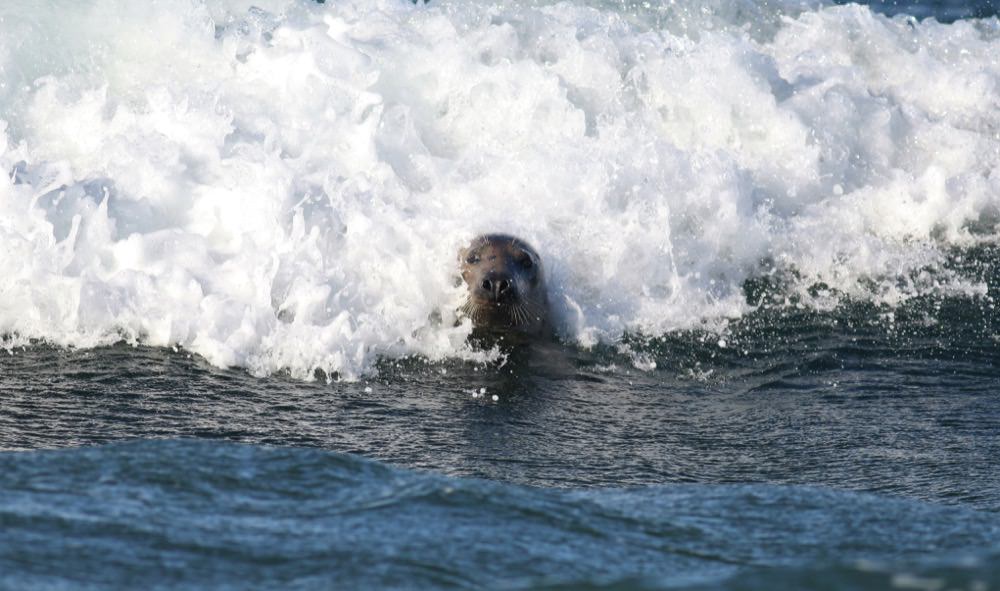Small but Mighty: Understanding Sand Lance in Stellwagen Bank National Marine Sanctuary
by Rebecca Wilken
January 2017
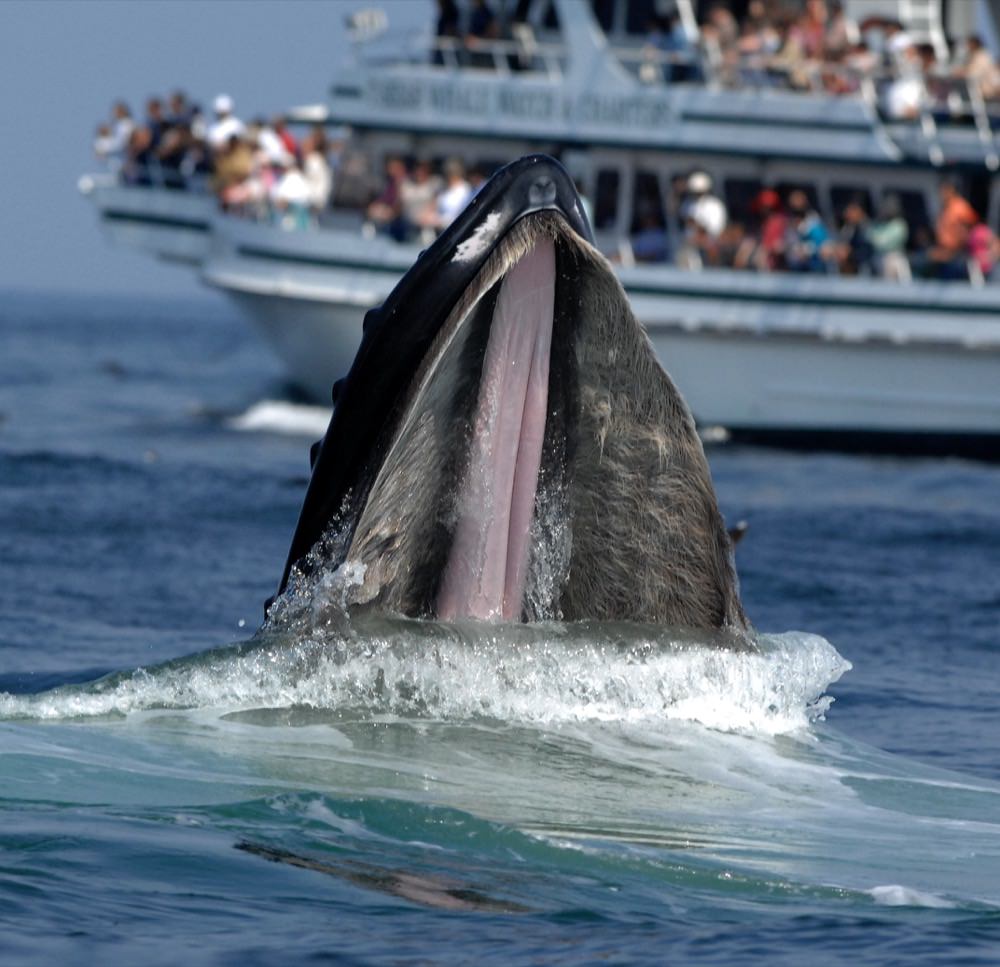
Since its designation in 1992, Stellwagen Bank National Marine Sanctuary has been one of the world's premier whale watching destinations. Now, scientists are learning that the reason so many whales come to visit has a lot to do with population fluctuations in tiny, eel-like fish called sand lance.
A favorite food of humpback whales, sharks, seals, seabirds, commercial fishes and many other ocean predators, sand lance are small (three to six inches long), wiggly fish that spend their days feeding on zooplankton and their nights burying into sandy seafloor habitats. Sand lance are no strangers to Stellwagen Bank, which offers them relatively shallow waters and a highly suitable sandy bottom for hiding.
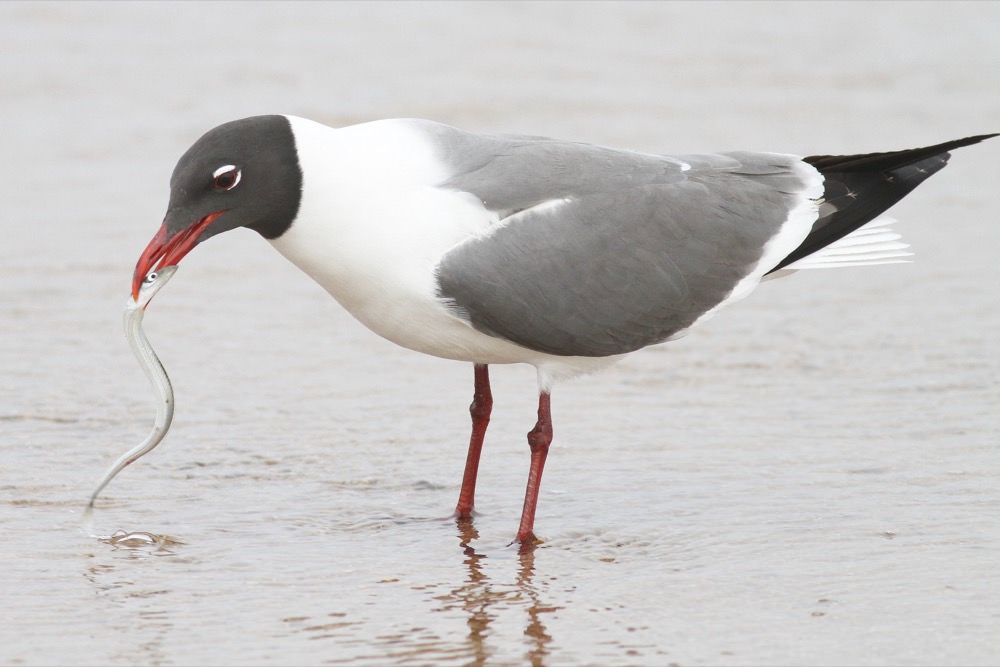
And while the abundance of sand lance has been correlated with an abundance of humpback whales, minke whales, cod, and other visitor favorites, there's quite a lot we still don't know about them. Scientists are still working to understand what make sand lance populations boom – and thus bring in the whales the sanctuary is famous for.
By studying sand lance, researchers at Stellwagen Bank National Marine Sanctuary are seeking to provide information about how forage fish (those eaten by bigger predators for food) like sand lance shape ocean ecosystems, and in turn how forage fish are impacted by changing environmental conditions.
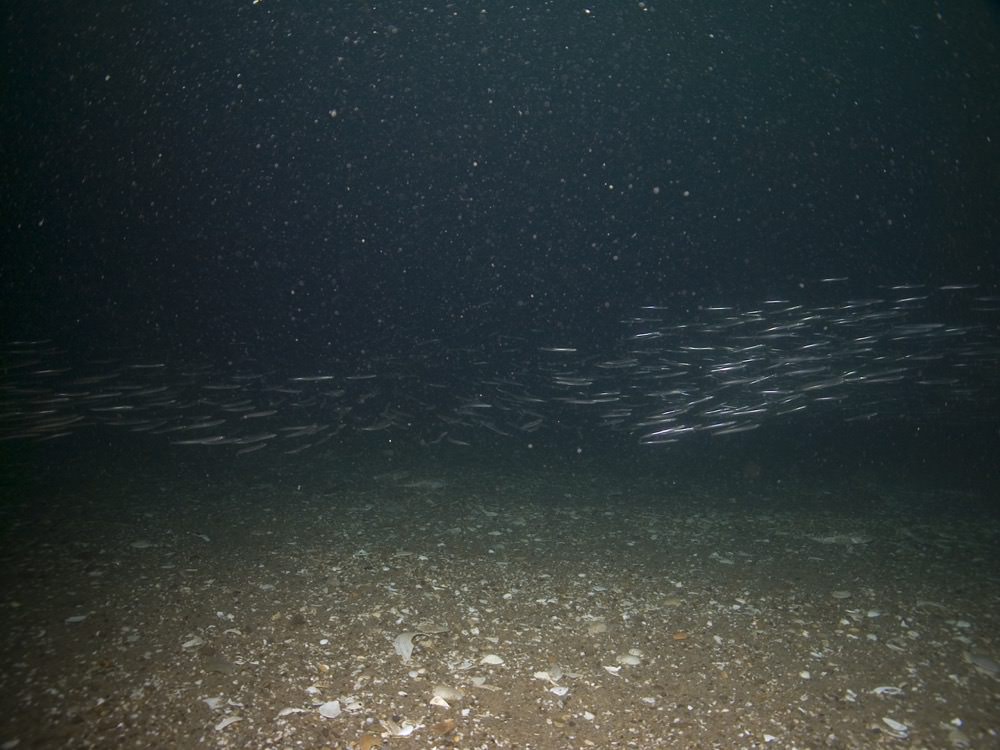
To gain information about sand lance ranges, reproduction, and population cycling, researchers at Stellwagen Bank have been surveying sand lance populations at 44 different sites throughout the sanctuary since 2013. Day and night, the research team has been using the Seabed Observation and Sampling System (SEABOSS), a technology created by researchers at U.S. Geological Survey, to image and sample sand lance throughout the sanctuary. The SEABOSS also records CTD (conductivity, temperature, and depth) data as a way to help researchers understand how oceanographic variables impact sand lance abundance and distribution.
"At the same time we sample for sand lance, we're taking counts of seabirds and whales," says Dr. David Wiley, research coordinator at Stellwagen Bank National Marine Sanctuary. "We even have shearwaters satellite-tagged in the sanctuary, so we can look at their distribution and abundance in correlation to sand lance." Seabirds prey on sand lance but are easier to spot than the small fish. By tracking shearwaters, sanctuary scientists can better understand the location and availability of their prey.
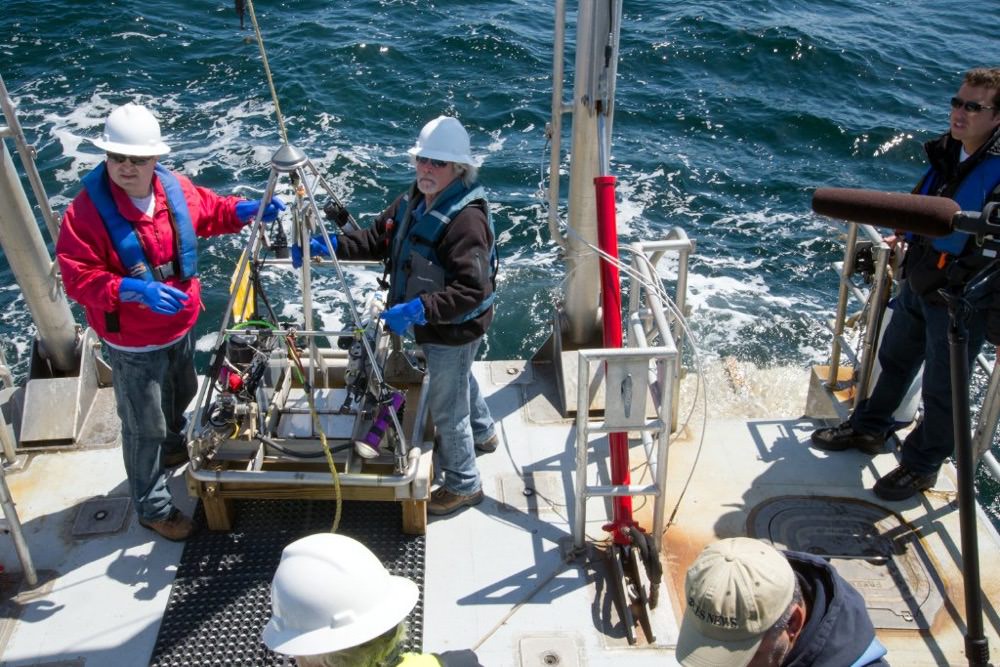
This year, the Stellwagen team added new collaborators. Scientists from the Woods Hole Oceanographic Institution will be focusing on larval sand lance and their relationship to phytoplankton and zooplankton resources.
Why plankton? Wiley explains that "One of the main functions of sand lance is to connect phytoplankton and zooplankton to higher trophic levels." That is, when sand lance eat small organisms like plankton and consume the energy and nutrients those plankton hold, they can then pass that energy on to organisms like whales that eat sand lance. In this way, sand lance help transfer energy from producers (phytoplankton) on up to consumers (fish, seabirds, and whales) in ocean food webs. By adding plankton into the mix, Wiley's team is able to grasp a much more complete picture of how sand lance impact, and are impacted by, the entire ocean ecosystem.
Researchers are also interested in how water chemistry impacts sand lance because sand lance appear to choose very specific habitats as home. They prefer specific sand grain sizes and water no deeper than 90 to 100 meters (about 295 - 330 feet), which ties sand lance to particular ocean areas. "They're potentially quite vulnerable to climate change because they're kind of stuck in one habitat," Wiley states. "There are lots of reasons to be concerned about them." If warming waters move phytoplankton blooms away from the sand lance's preferred habitat, for example, the sand lance could go hungry -- which could have impacts throughout the food web.
To that end, the team is collaborating with scientists from the University of Connecticut (UConn). UConn study members transport live-caught sanctuary sand lance to their lab, where further generations of sand lance are raised. The resulting larval sand lance are raised in high-tech rearing facilities that can be adjusted to mimic future ocean conditions.

Studying important aspects of water chemistry impacted by climate -- and how sand lance populations correlate with changes in these variables -- could be eye opening. By combining these data with counts of seabirds and whales farther up the food chain and measurements of plankton lower down in the food chain, the sanctuary can begin to build a complete picture of sand lance activity and better understand the role sand lance play in ocean environments. This information will be critical in allowing the sanctuary to develop effective management strategies, and will also help locals determine when peak sand lance seasons (and affiliated whale sightings!) might occur.
"There's not a lot of protection for forage fish these days," says Wiley. But protection for these fish could be particularly valuable for all of us. Because so many species enjoy chowing down on sand lance, a decline in sand lance populations could mean a decline in predator species as well, sending vibrations throughout the food chain. Protecting forage fish like sand lance can help us maintain the productivity and stability of ocean ecosystems. But we have to understand the biology of these fish before we can fully understand their role in ocean ecosystems, and how best to protect them.
Like most complex ecological studies, the project will be many years in duration. We look forward to learning more about the life of the sand lance from this new study, and how preservation of these tiny wiggly fish can help maintain Stellwagen Bank National Marine Sanctuary as one of the best whale watching sites on our blue planet and a haven for marine species.
